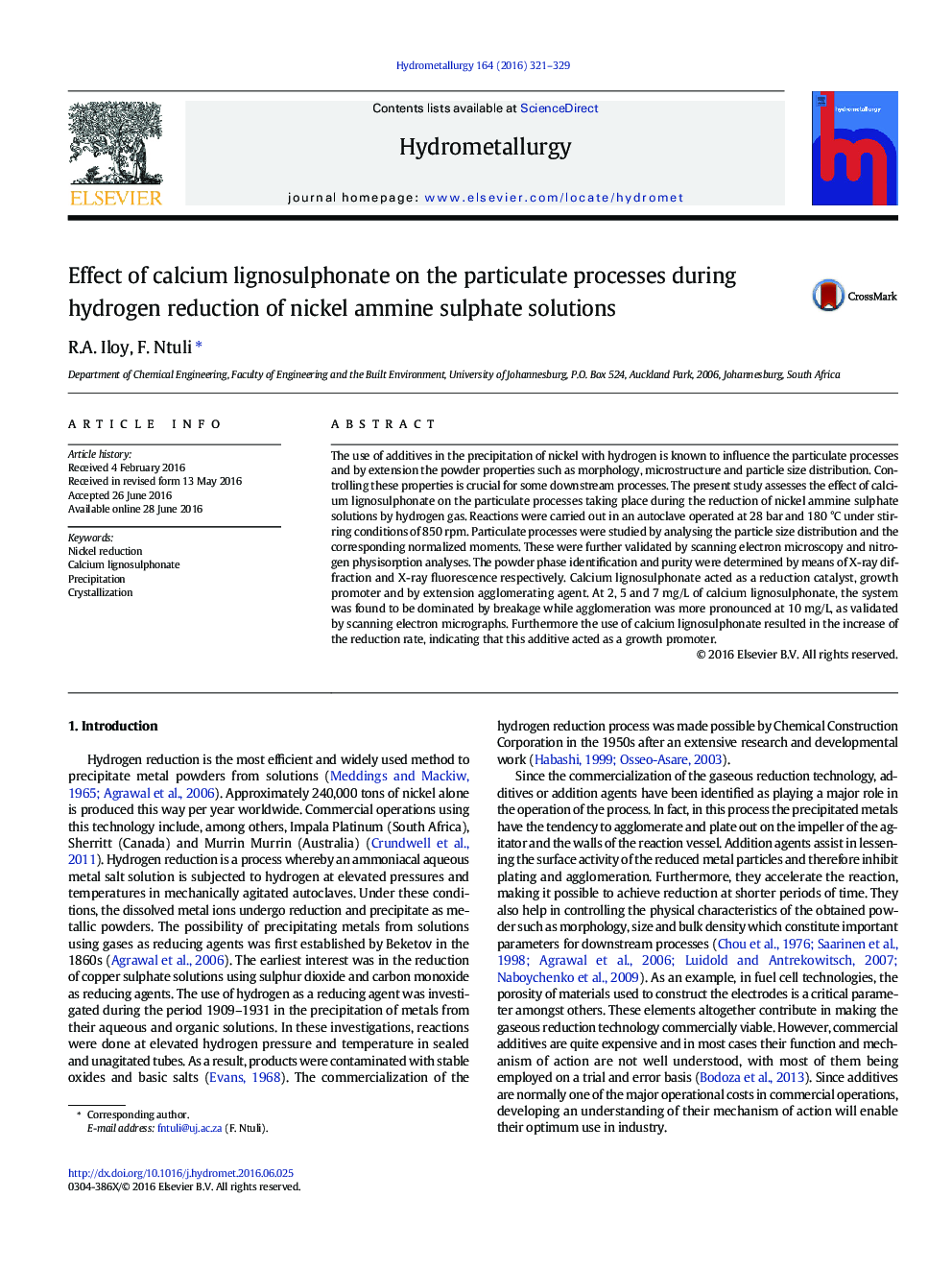| Article ID | Journal | Published Year | Pages | File Type |
|---|---|---|---|---|
| 6659212 | Hydrometallurgy | 2016 | 9 Pages |
Abstract
The use of additives in the precipitation of nickel with hydrogen is known to influence the particulate processes and by extension the powder properties such as morphology, microstructure and particle size distribution. Controlling these properties is crucial for some downstream processes. The present study assesses the effect of calcium lignosulphonate on the particulate processes taking place during the reduction of nickel ammine sulphate solutions by hydrogen gas. Reactions were carried out in an autoclave operated at 28 bar and 180 °C under stirring conditions of 850 rpm. Particulate processes were studied by analysing the particle size distribution and the corresponding normalized moments. These were further validated by scanning electron microscopy and nitrogen physisorption analyses. The powder phase identification and purity were determined by means of X-ray diffraction and X-ray fluorescence respectively. Calcium lignosulphonate acted as a reduction catalyst, growth promoter and by extension agglomerating agent. At 2, 5 and 7 mg/L of calcium lignosulphonate, the system was found to be dominated by breakage while agglomeration was more pronounced at 10 mg/L, as validated by scanning electron micrographs. Furthermore the use of calcium lignosulphonate resulted in the increase of the reduction rate, indicating that this additive acted as a growth promoter.
Related Topics
Physical Sciences and Engineering
Chemical Engineering
Chemical Engineering (General)
Authors
R.A. Iloy, F. Ntuli,
